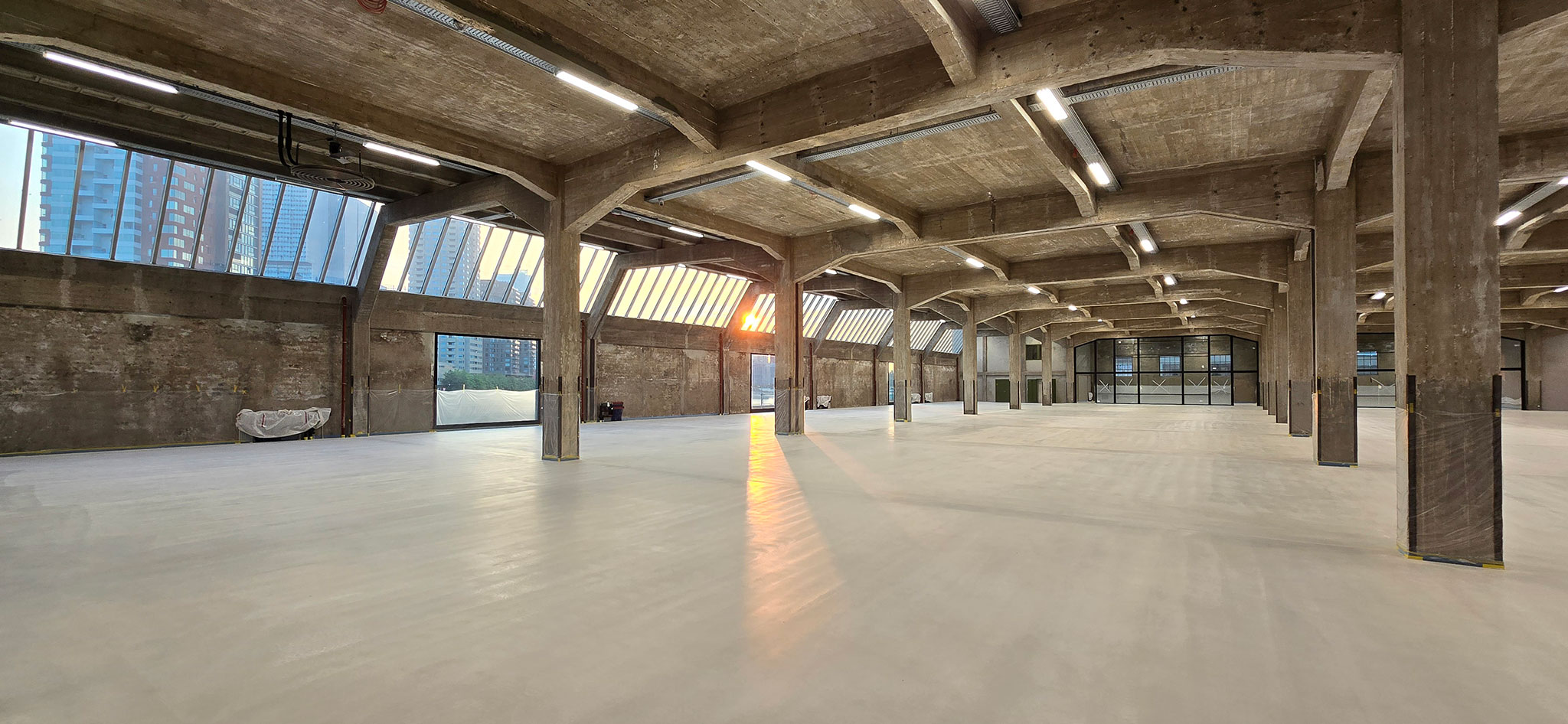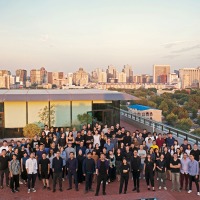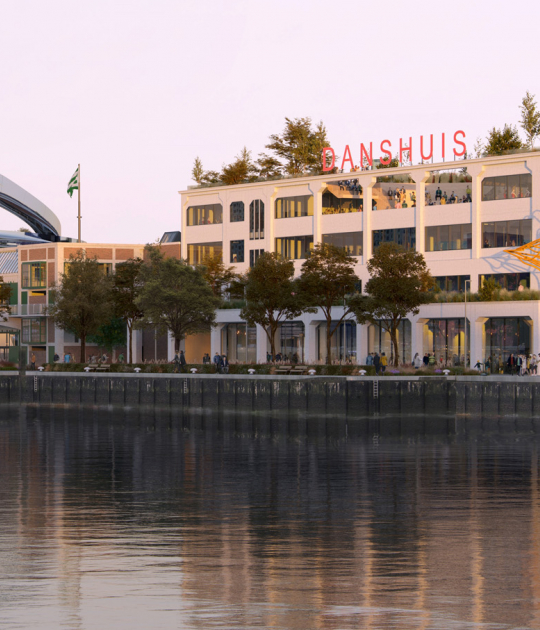
The project developed by Ma Yansong/MAD Architects in Fenix proposes a new international art museum that explores migration through contemporary art. The building serves as the centerpiece of the transformation of Katendrecht, the harborside neighborhood in which it is located, formerly known as the city's red light district and the oldest Chinatown in continental Europe.
The renovation of the identity heritage complex for the local community that shapes the new museum represents a model for a new sustainable neighborhood, which in addition to developing new types of artistic and cultural institutions, encourages new creative talents that reflect the diversity of the city, its spirit and its history.
Evoking the air that flows upward from the ground floor in the shape of a tornado, a double helix staircase clad in polished stainless steel emerges high from the interior of the building, offering a viewing platform with spectacular views of the river and the city from the highest point of the museum.

Interior view. Fenix by Ma Yansong/MAD Architects. Photograph by Wilbert Zuiderduin.
Project description by Ma Yansong/MAD Architects
I am interested in the relationship between nature and the manmade. Our aim at MAD is to create organic structures. We try to make the experience of architecture really dynamic and natural. With its emphasis on technology, volume, and structure, modern architecture can sometimes lack in its emotional connection to nature. But that, I think, is where the future of architecture should lie.
A lot of people say our designs are futuristic. I am not sure what they mean, but certainly I am interested in the abstract quality of a building. I like to withdraw the present from the architectural space, when people visit our buildings, they feel a little bit lost, curious about the past and the future. I think the emotion of nature, together with abstraction, which may be considered futuristic, are two key characteristics of our architecture.

When we were asked to work on Fenix, we knew we had to create a dialogue with the existing building and its surroundings – and with a past containing so many stories of migration, such a lot of memories, and so much uncertainty. In designing a new structure, we had to show this dialogue, to create a narrative around the relationship between the future and the past, and continue the story of the building. The Tornado is all about the future, but it’s not a floating thing, it’s rooted in the past. All of the future comes from history.
The Fenix warehouse is a very long building, and out of it the Tornado rises up into the sky. It feels uplifting. It seems linear, but is actually two spirals, which lock into and support each other. There are connecting points between the two spirals. As you go up and down and round, you see other people. It’s playful, everyone can experience it differently. For me, it’s a metaphor for the journeys of migrants who passed through this building.
It is also functional, a way of moving between the two floors of the warehouse. But then it breaks out through the rooftop, and you go up and beyond to admire the beautiful surroundings – another metaphor. It feels like a sculpture, and that’s how people will read it from a distance. But when they visit they’ll find this sculpture leads them to an unknown place. I imagine it’s like when you get on a boat to go to another country, you don’t quite know where you are going. The reflections you see on your way up and down, of yourself and others, give a dramatic, distorted image. It’s almost like a dream, or a water wave. Also, it is optimistic. We made the lobby very bright, with a glass roof, and you go up, longing for the sun, the light, the air.

In Rotterdam, a city with so much new architecture, the emphasis is on big volumes and very strong, heavy buildings. But this place is different. The warehouse is horizontal, part of the dock, and beside it is water, in perpetual movement. That’s the contrast – the city is heavy, but the water around it is dynamic and moving. We wanted our project to move in that way, flowing out from the centre of the concrete warehouse. And of course it’s about both natural movement and human movement.
The construction was difficult. We wanted the Tornado to seem almost weightless, so you feel uplifted and light. The random quality of my first sketch had to remain, right from the very first step on the stairs. But to keep that randomness took a lot of calculation, and it was challenging to translate it into a structure with so many members and steels. But the emotion – the freedom and the movement – is there, in the Tornado’s imperfect geometry.
In terms of the efficiency of the Fenix building, the glass roof is vital. The atrium is really bright, using a lot of natural light, and at the same time the Tornado provides shading. From the lobby you see the sky, but it’s not hot. The view through the lobby is also transparent – it’s an inside urban space that connects with green space on one side and the waterfront on the other.

We talk about the intrinsic value of historic buildings, but it’s people’s stories and dreams that really matter. We did not want to strengthen Fenix’s industrial character but instead enhance its spiritual quality. The Tornado is unexpected, but somehow it represents the narrative of the place, of how people used and passed through it.
What is a museum for? For me, it’s not all about the function, the circulation and the white box – which, makes you want to escape. It’s about inspiring people. Architecture can help with that, projecting values and enabling multiple layers of experience.
Our intervention at Fenix could possibly be the start of more natural and organic architecture in Rotterdam. I am very happy to be part of the history of this city, in a neighbourhood that includes Europe’s first Chinatown and, above all, because many great architects live and work here – and they too are working in China.
































